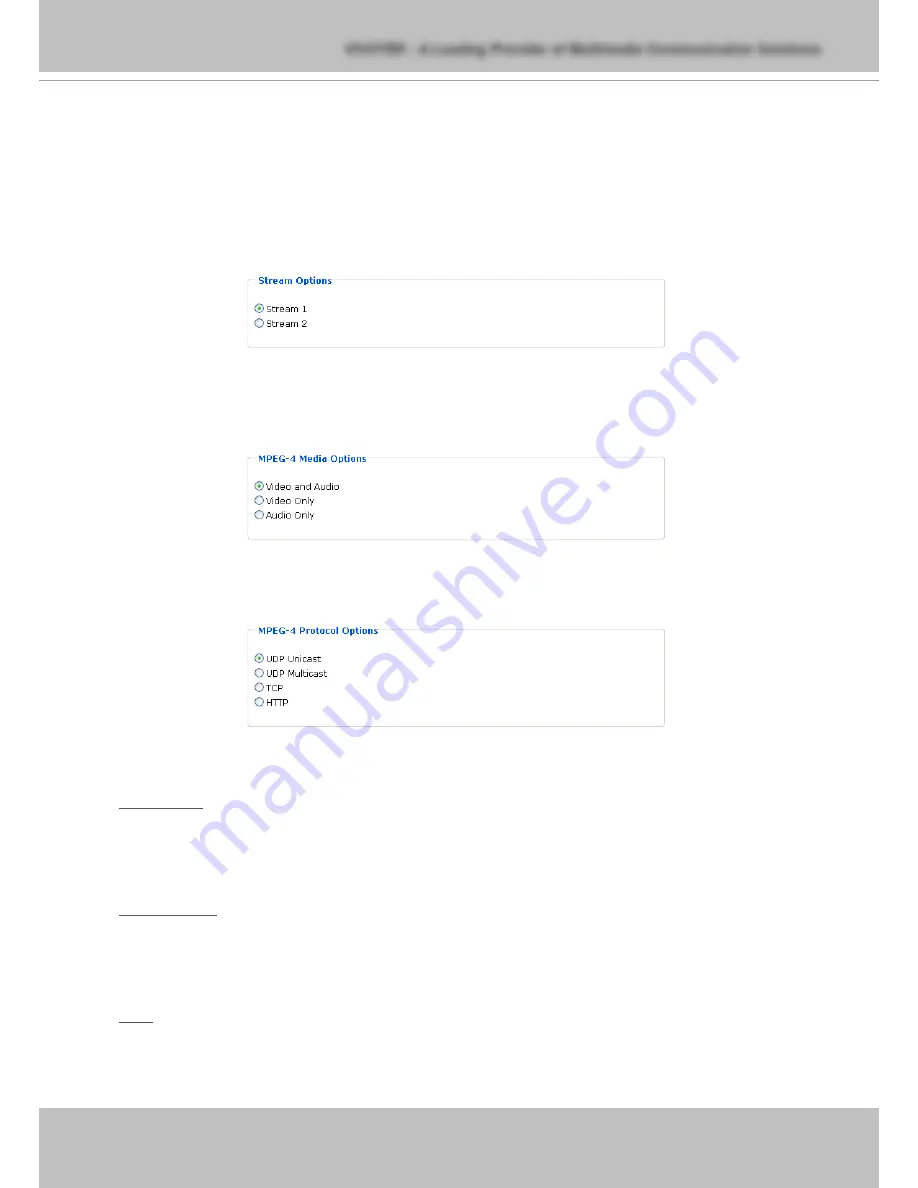
VIVOTEK - A Leading Provider of Multimedia Communication Solutions
User's Manual -
Client Settings
This chapter explains how to select the streaming source, transmission mode and saving options
at local computer� It is composed of the following four sections: Stream Options, MPEG-4 Media
Options, MPEG-4 Protocol Options and MP4 Saving Options� When completed with the settings on
this page, click Save to take effect�
Stream Options
The Network Camera support dual streams: MPEG-4 and Motion JPEG� Select the streaming
source from stream 1 or stream 2� For more information, see Video settings on page 41�
MPEG-4 Media Options
Select to stream video or audio data� This works only when the video mode is set to MPEG-4�
MPEG-4 Protocol Options
Depending on your network environment, there are four choices of transmission modes for
MPEG-4 streaming:
UDP unicast
:
This protocol allows for more real-time audio and video streams� However, network
packets may be lost due to network burst traffic and images may be obscured� Activate UDP
connection when occasions require time-sensitive responses and video quality is less important�
Note that each unicast client connecting to the server takes up additional bandwidth and the
Network Camera allows up to ten simultaneous accesses�
UDP multicast
:
This protocol allows multicast-enabled routers to forward network packets to all
clients requesting streaming media� This helps to reduce the network transmission load of the
Network Camera while serving multiple clients at the same time� Note that to utilize this feature,
the Network Camera must be configured to enable multicast streaming at the same time� For more
information, see RTSP Streaming on page 33�
TCP
:
This protocol guarantees the delivery of streaming data and thus provides better video
quality� Nevertheless, the downside with this protocol is that the real-time effect is worse than that
with the UDP protocol for a narrower bandwidth�






























